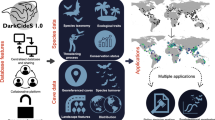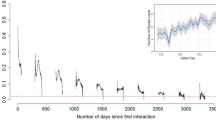Abstract
OBSERVATIONS in three bat-infested caves in Trinidad suggest that roosting bats can play a considerable part in cave excavation where the rock is soft. The best example of this bat erosion is to be seen in a cave in soft coral reef limestone in Mt. Tamana. Wherever the roof is dry, as indicated by the absence of stalactite growth, it is pitted with numerous bell-shaped cavities, the upper parts of which are lined, by day, by a layer of closely packed sleeping bats. On the cave floor below each such cavity is a conical mound of bat guano.
This is a preview of subscription content, access via your institution
Access options
Subscribe to this journal
Receive 51 print issues and online access
$199.00 per year
only $3.90 per issue
Buy this article
- Purchase on SpringerLink
- Instant access to full article PDF
Prices may be subject to local taxes which are calculated during checkout
Similar content being viewed by others
Author information
Authors and Affiliations
Rights and permissions
About this article
Cite this article
KING-WEBSTER, W., KENNY, J. Bat Erosion as a Factor in Cave Formation. Nature 181, 1813 (1958). https://doi.org/10.1038/1811813a0
Issue date:
DOI: https://doi.org/10.1038/1811813a0
This article is cited by
-
‘Bat Erosion’ at Niah Great Caves
Nature (1959)
-
Bat Erosion as a Factor in Cave Formation
Nature (1958)



